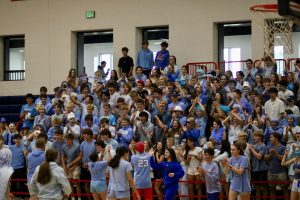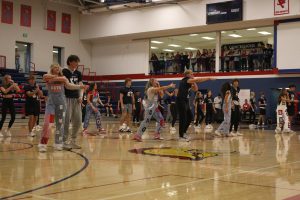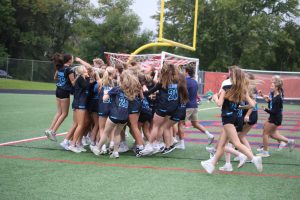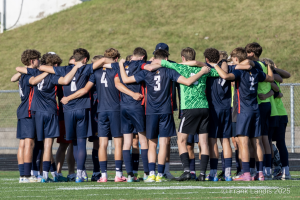District is confident in weather day system
December 16, 2014
“If you hear about Mound or Delano closing that does not mean that we will be following,” Superintendent Dr. Karen Orcutt said.
Orcutt believes that if the buses are able to be run and students are able to make it to school, we will be running school, despite the weather conditions.
“We do communicate with other superintendents and other school districts throughout the time that we have to make the decision and we try to get a look at what is happening around us as well,” Orcutt said. However, Orcutt also said that if a family feels strongly about not sending their student to school on a weather day, they have the right to make their own decision.
“That is the policy we are very liberal about. If a family makes the decision to keep their student home from school due to weather conditions, they are free to do so and we will excuse them,” Orcutt said.
According to Business Source Premier, students suffer a great deal when school cancellations are prolonged for multiple days at a time.
“Students may have been driving for 2 years, and some for 2 months, it’s unsafe to expect us inexperienced drivers to drive ourselves to school on terrible roads,” senior Natily Larkin said.
The school does not have a distinct policy for a snow or cold day, but what they watch for is unusual weather patterns approaching the district area.
“The decision to keep school open on a day we experience strong weather conditions is not made in a split second, Orcutt said. It is a very long process that involves the input of many.”
Along with Orcutt, the decision to close school is carried out by the district business manager, communications director, the national weather services and the busing services.
“The most controversial thing we have faced regarding the subject is the five cold days we called last year,” Orcutt said.
The most weather days called in one year was five consecutive days and it occurred last year. It totalled more than Orcutt had seen in her 10 years as Orono’s superintendent.
“Last year when the governor called the first cold day he set the standard for the rest of the five days off of school so we had to comply with the rest of those days that fell under the 25-30 degrees below zero range,” Orcutt said.
After the string of “cold days” the district started a relationship with the National Weather Services. They are able to track weather conditions for every area on an hour basis, so their readings are the most accurate.
“Our district is very different than most because we have the eastern side of the district, which consists of city streets, and then the western part of the district, which consists of more rural land,” Orcutt said, “and we watch conditions over a 55-square-mile area, so the weather can vary a great deal.”
On all processes involving the closing of school due to weather conditions, Dr. Orcutt and a team of other individuals begin tracking weather systems at least 24-48 hours before they reach our district.
“I’m on a committee for the MN Dept. of Transportation that creates legislation and promotes safer driving for teens, and through this I understand how inexperienced we teenagers are at driving and expecting us to drive on terribly plowed (if plowed at all) roads is absurd,” Larkin said.
Orcutt and the district administration understand that it is impossible to make a decision that satisfies everybody.
“We get complaints no matter what. People complain when they believe school should have been closed, and we get complaints from people who think school should have not been closed,” Orcutt said. “We try to make the best decision based on our transportation system and based on our students and where they are coming from.”
For students, the main concern is missing important learning days in Advanced Placement (AP) classes.
“I understand that many students take AP classes so it’s hard to miss school, but I also don’t think it’s safe under some conditions,” Larkin said.
Orcutt hopes that with the fast approaching cold weather and snow, their new relationship with the National Weather Service helps inform them sooner and more accurately so that the student body, their parents and the faculty can plan according to the district’s decisions.





























































